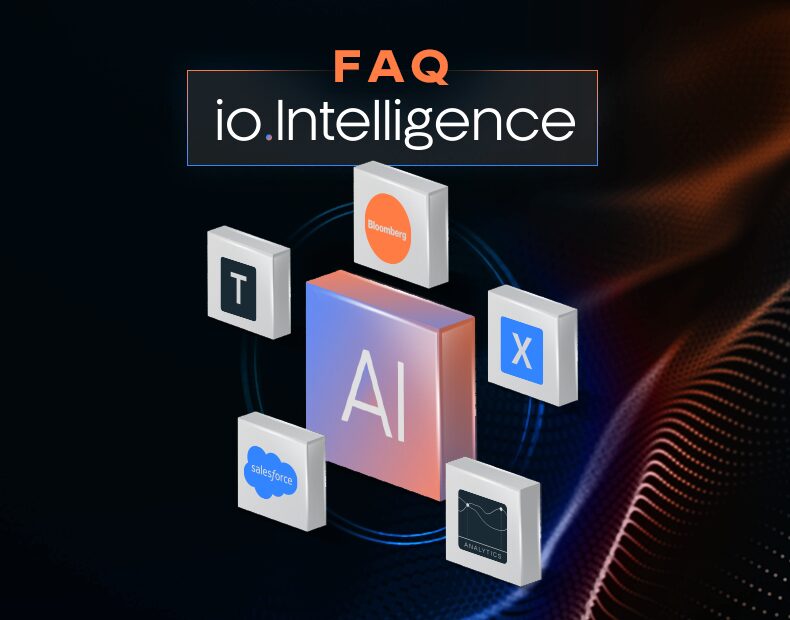
Introducing the Desktop Interoperability Maturity Model
Set your organization up for success with a guide to help benchmark your progress and discover where you stand when it comes to interoperability initiatives.
Int-er-op-era-bility – hard to say and even harder to understand how to apply it for success. While it has become something of a buzzword in the financial services industry, many firms are still struggling to comprehend its full potential from both a business and technology perspective. After many discussions with clients and partners over the years, we began to see that for firms to fully recognize the power of interoperability, there were many questions that needed to be answered. How could we help firms understand the importance of interop in their platform modernization efforts? How could we bring the importance of user experience to the forefront of their thinking? How could we help firms get started with their interop journey? How could we help firms understand where they were on their journey? How could we help firms progress faster, at a lower cost and with more certainty?
It was these questions that we sought to answer by developing a framework – The Desktop Interoperability Maturity Model, more simply known as The Maturity Model. The first one of its kind.
Introducing the Desktop Interoperability Maturity Model
The Maturity Model is focused on two distinct paths to desktop interoperability: Workflow Integration and User Interface (UI) Integration. Workflow Integration is the ability for applications to synchronize data, share information, and build Straight-Through Workflows where information passes seamlessly between the applications required to complete a given task. UI Integration is about how applications are built, launched, and managed through the creation of microapps, app stores, workspaces, and layouts.
Together they help guide the user through the masses of data available to them in order to get the best possible outcomes for themselves and their clients. This way data is unlocked from the applications they reside in and is free to flow and be manipulated however the user wishes. Further on, this means that guiding users with intelligent Next Best Actions (NBAs) becomes the norm.
These two paths are the typical entry points that we see firms taking based on their own vision and use cases. For example, we have firms that simply want to stitch together two or three critical applications such as their OMS with Bloomberg and automate the workflows between them and others who are looking to modernize their existing platforms or build entirely new ones from scratch. This applies to both financial organizations as well as software vendors.
Within the model, each path has then been divided into levels and as a firm progresses through them, the better the user experience becomes, and the deeper and more sophisticated the integration becomes with notifications, usage analytics, low/no code and AI all coming into play.
While the paths and levels in the model are described separately, depending on the problems and use cases that a firm is trying to solve, they may end up mixing and matching levels from both paths. The ultimate goal of desktop interoperability is a seamless and single-platform experience for end users where workflow integration and UI integration converge. However, it is important to state that maturity does not mean applying both disciplines to every set of users. Maturity refers to an approach that considers the user, their workflows, and the full set of applications they work with, and then decides what is appropriate.
The diagram below illustrates the model, the two paths to integration and the levels of progression:
Best Practices for Interoperability Success
In addition to the model itself, see below some of the best practices for success whether you are looking to do simple workflow automation or are embarking upon a larger platform modernization journey using interoperability:
Shift your design thinking: Interop programs, big or small, require a momentous shift in design thinking. Traditional design thinking for the desktop has been centered around building applications in isolation. This has led to fragmented data and workflow experiences for end users that do not match the way they actually work. The reality is that users care about data and workflows to get their jobs done and work across many applications simultaneously. So, the focus should be on building workflows that stretch across applications. This means analyzing end-to-end business processes, workflows, and user journeys first before designing an underlying solution. User experience must be at the heart of the analysis and design process.
Strong collaboration between business and technology is crucial to success: For years, the business has had to put up with technology that has been pushed on them and they have had to bend their business processes to fit with that technology. In the digital age, this no longer works. It’s important to get business buy-in early. Find those desk champions and let them advocate and evangelize for you. If you can continually deliver value to the business throughout your modernization program, then you will succeed.
Create ecosystems from composable building blocks: Building a best-of-breed platform requires a buy, build and blend approach. For financial institutions, be open to collaboration with FinTech and BigTech vendors to accelerate your modernization program. For software vendors, understand where your applications fit into end-to-end user workflows, stick to your specialism and embrace openness, flexibility, and collaboration. Be interop-ready and become part of an ecosystem
Implement strong governance: For those embarking on a platform modernization journey, strong governance is key from the start. This means putting structures and processes in place with defined roles and responsibilities and developing a robust methodology from analysis and design through to implementation.
We hope that the Interoperability Maturity Model will serve as the go-to framework for financial services organizations to understand the importance of interoperability, the benefits it brings, get started on their interop journey and increase their chances of successful workflow automation and platform modernization.



